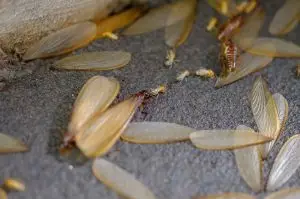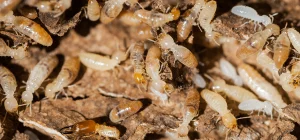There are many creatures in Florida that are cause for concern, but there are few that have as much access to you and your family as ticks do, especially if you have a pet. Ticks don’t squeeze in through your exterior walls. They hop onto your furry family member and ride their way in. Once inside, they can plague everyone in the home with irritating, itchy bites. But, uncomfortable bites aren’t the only thing you have to worry about with ticks. They can also transmit diseases, some of which can cause lifelong illness and medical complications. Take a moment to look through these tick facts and familiarize yourself with the ticks we have here in Florida.
Rhipicephalus sanguineus (Brown dog tick, kennel tick, pan-tropical dog tick)
- Larvae are active from June to November
- Nymphs are active from February to October
- Adults are active from April to August
Medical Importance: Ehrlichiosis, STARI, anaplasmosis, and several canine-related diseases.
These are the most recognizable ticks in Florida, and also the most plentiful. They are small reddish ticks with dark black coloring in their back. Larvae have six legs, and are most likely to pass disease to humans because they can feed longer without detection. Fully mature dog ticks can grow to be 3 mm.
Ixodes scapularis (Blacklegged tick, deer tick)
- Larvae and nymphs are active from May to August
- Adults are active from September to May
Medical Importance: Lyme disease, babesiosis, and anaplasmosis.
Male deer ticks are mostly black in color. Females are black and reddish brown. As with other ticks, larvae will have 6 legs and develop another pair when they grow to be nymphs. These are dangerous ticks because of their ability to spread Lyme disease, but also because a fully grown deer tick is only about a millimeter.
Dermacentor variabilis (American dog tick, wood tick)
- Larvae are active from July to February
- Nymphs are active from January to March
- Adults are active from March to September
Medical Importance: Rocky Mountain Spotted Fever and tularemia.
The larvae of these ticks have six legs and are less than .62 mm. When they develop into nymphs they are still extremely small at less than .9 mm. Adults are around 2mm. Males have a mixture of gray and black coloring, while the female is a two tone mix of tan and dark red.
Amblyomma americanum (Lone Star tick)
- Larvae are active June to November and are often called seed ticks because of their extremely small size and abundance.
- Nymphs are active from February to October
- Adults are active from April to August
Medical Importance: Ehrlichiosis, rickettsiosis, tularemia, and theileriosis. This tick species has also been linked to a red meat allergy that can cause chronic and persistent symptoms.
As with all ticks, the larvae of the Lone Star tick has only six legs, and is less than 1 millimeter long. A fully grown Lone Star tick is about 3 mm. A female of this species has a single pale dot on her dark red back. The male has the same dark red color, but does not have the pale “Lone Star” dot.
Amblyomma maculatum (Gulf Coast tick)
- Nymphs are active from February to August
- Adults are active from March to November
Medical Importance: Rickettsia parkeri
Larvae of this species are pinkish, have six legs, and are only a mere .5 mm in size. Nymphs and adult have eight legs and grow to be about 1 mm to 1.7 mm. This tick species has a dark reddish color with pink lines on its back that look like cracks in the pavement.
All Ticks
It is important to understand that all ticks look dramatically different when engorged. When their abdomen fills, it can grow to be many times larger than the tick itself. For many species, this engorged abdomen will be a grayish color. Ticks can establish themselves on a wide range of animals from birds to reptiles. If you have animals coming into your yard or entering your home, they can bring ticks with them.
You can protect yourself from all of these ticks in the same way:
- Tuck your pants into your socks if you will be walking in the grass.
- Spray repellent on your shoes and pant legs to keep ticks off.
- Wear bright colors so you can see ticks crawling up the outside of your clothing.
- Be sure to do a thorough check of your skin after being in nature. Look closely, ticks can be small, especially if they are larvae or nymphs.
- Have a professional pest control company treat your lawn to reduce ticks.
- If you need help protecting your yard from all of the tick species found in Florida, reach out to Nozzle Nolen today to schedule safe, effective tick treatments.

